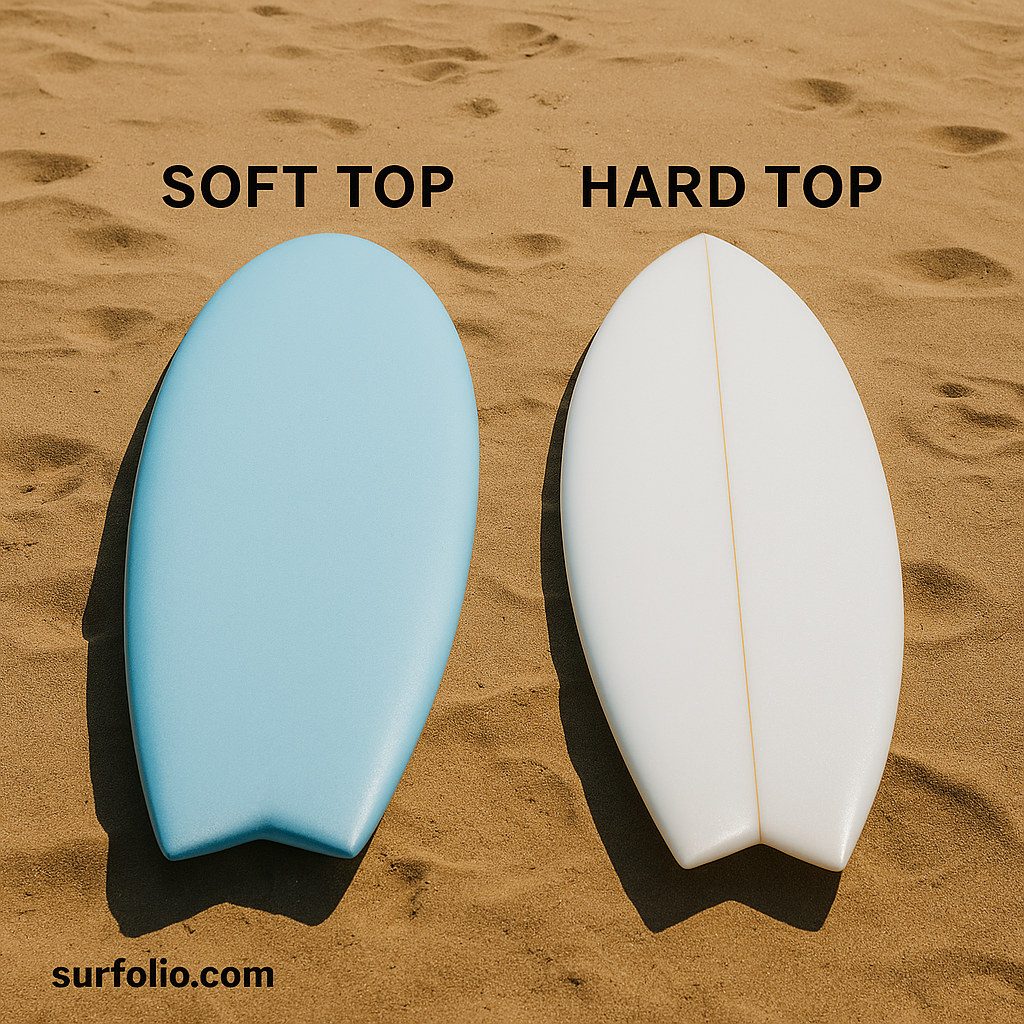
When choosing your next surfboard, one of the first decisions you’ll face is whether to go with a soft top or a hard top. Each has its own advantages depending on your experience level, surf style, and local conditions. Understanding their differences helps you pick the right board to match your goals—whether you’re just starting out or looking for a new favorite for fun summer sessions.
What Is a Soft Top Surfboard?
A soft top surfboard has a foam-covered deck instead of the traditional fiberglass or epoxy shell. These boards are designed for safety, stability, and ease of use—perfect for beginners and casual surfers.
Soft tops have a spongy surface that makes paddling and standing up less intimidating. They’re also incredibly durable, able to handle dings, drops, and crowded lineups without much damage.
Pros of Soft Tops:
- Great for beginners and surf schools
- Softer surface reduces injury risk
- Excellent float and stability
- Durable and resistant to dings
- Affordable and low maintenance
Cons of Soft Tops:
- Less responsive in turns
- Heavier and slower
- Limited performance for advanced maneuvers
Soft tops are ideal for small, mushy waves or days when you just want to have fun without worrying about damaging your board.
What Is a Hard Top Surfboard?
A hard top surfboard (fiberglass or epoxy) has a firm, glossy outer shell and a more precise shape. These are the performance boards that most experienced surfers use. They cut through water more efficiently, respond instantly to movement, and deliver speed and control.
However, they’re more fragile and can crack, ding, or delaminate if mishandled. Hard tops demand more skill—but reward you with much higher performance potential.
Pros of Hard Tops:
- Faster, smoother glide on waves
- More responsive and agile
- Lighter for advanced maneuvers
- Sleek, high-performance designs
Cons of Hard Tops:
- Easier to damage
- Less forgiving for beginners
- More expensive and higher maintenance
Hard tops shine in clean, powerful conditions where precision and technique matter most.
How to Choose Between Them
Choose a Soft Top If:
- You’re a beginner learning to balance and paddle
- You want a safe, family-friendly board
- You’re surfing small, slow waves
- You need a durable backup board for summer
Choose a Hard Top If:
- You have intermediate to advanced skills
- You’re surfing larger, faster waves
- You want sharper turns and performance
- You’re ready to take your surfing to the next level
A Hybrid Option
Some surf brands now offer soft-top hybrids—foam boards with hard bottom layers or reinforced rails. These boards combine the comfort of a soft top with the speed and feel of a hard top, offering a versatile middle ground.
Final Thoughts
Soft tops and hard tops each serve a purpose in your surf journey. Soft tops make learning and casual sessions safe and fun, while hard tops let experienced surfers push their limits with speed and precision.
The best surfers know—it’s not about one or the other. It’s about having the right board for the right day.
